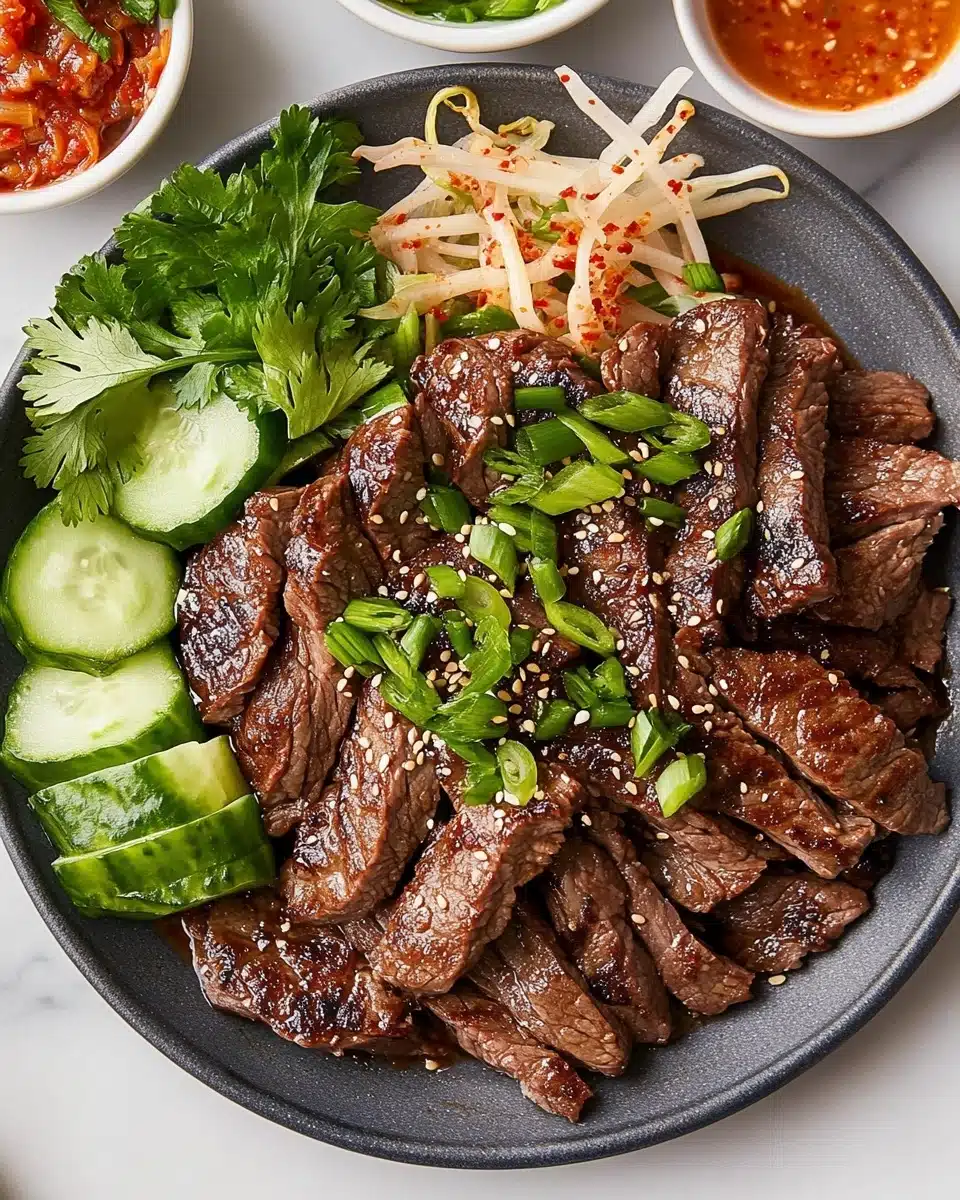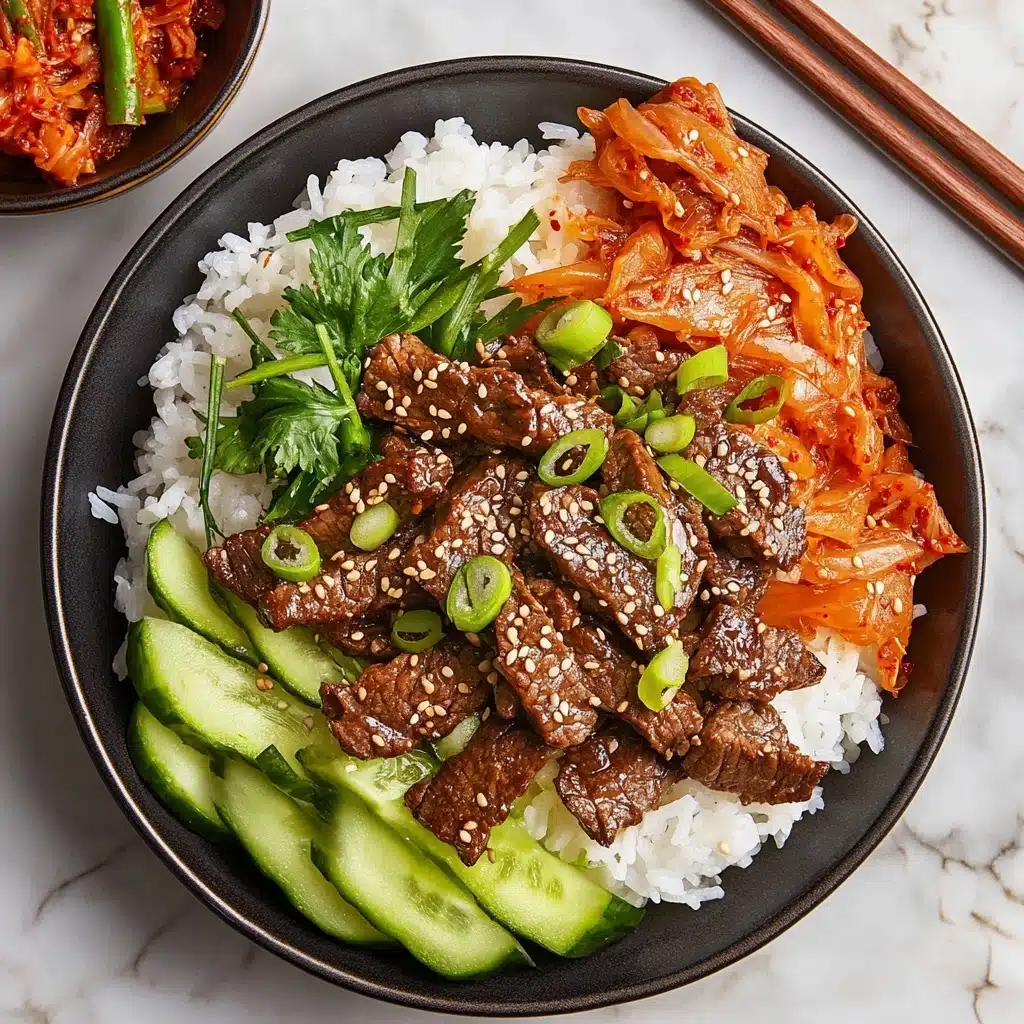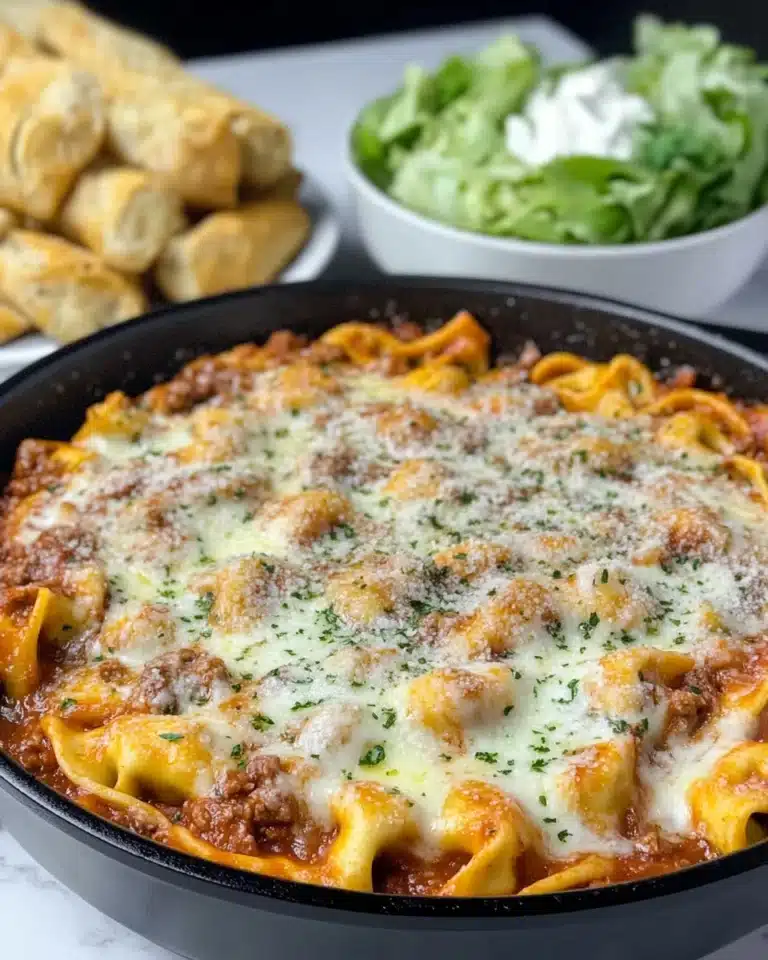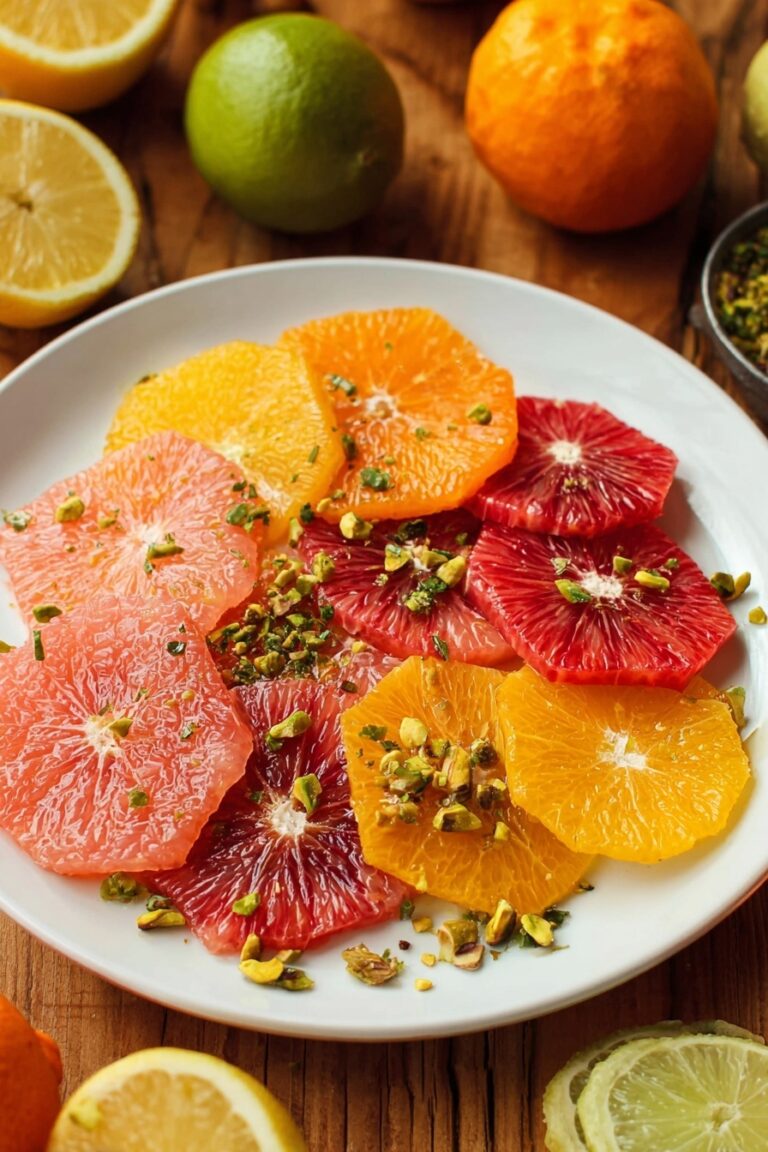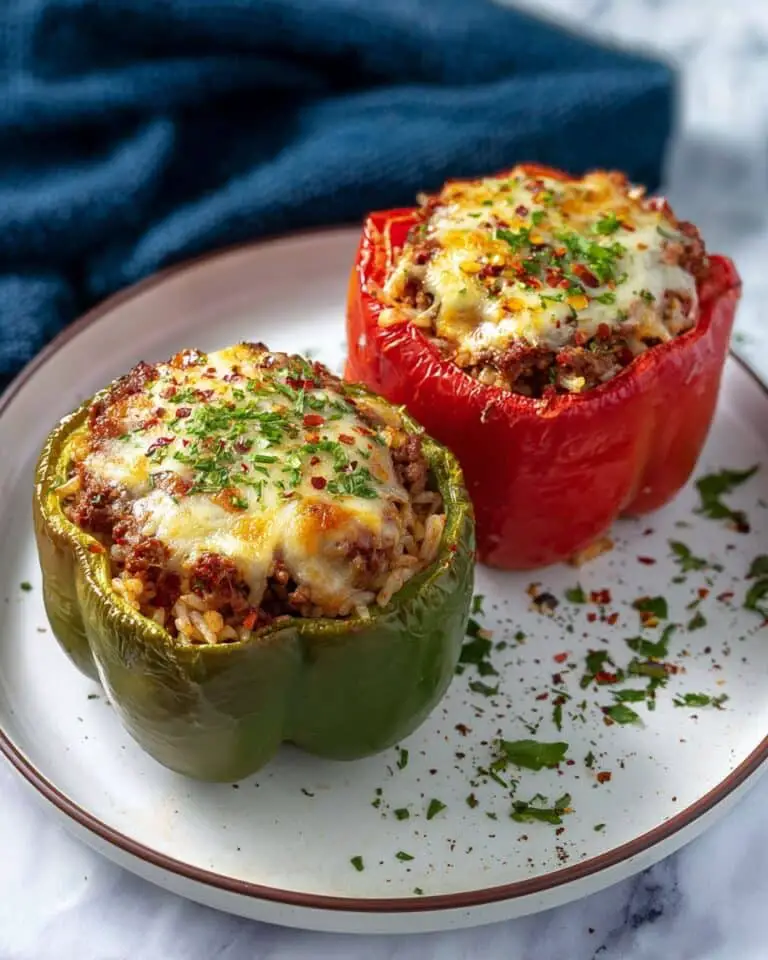Get ready to fall in love with Korean Beef Bulgogi—a dish that’s so packed with savory-sweet flavors and irresistibly tender beef, it will easily become your new favorite. Whether you’re new to Korean cuisine or already a die-hard fan, this classic is the ultimate comfort food that brings restaurant-quality taste right to your home kitchen.
Why You’ll Love This Recipe
- Absolutely Tender Beef: Freezing and thin-slicing gives you melt-in-your-mouth strips every time.
- Savory-Sweet Marinade: Classic flavors like soy, pear, brown sugar, and gochujang make the beef totally craveable.
- Weeknight-Friendly: Most of the prep happens ahead with marinating, so it cooks in minutes when you’re ready to eat.
- A True Crowd-Pleaser: Whether served over fluffy rice or rolled up in lettuce wraps, everyone gets excited about Korean Beef Bulgogi.
Ingredients You’ll Need
Korean Beef Bulgogi uses simple, everyday ingredients that each play a starring role in building deep, layered flavor and giving the final dish its signature glossy look and mouthwatering aroma. Here’s how each contributes to the magic!
- 1 ½ pounds boneless rib eye steak: The classic beef choice for bulgogi—the marbling keeps it juicy and full of flavor.
- ½ small pear, peeled and coarsely grated: Acts as a natural tenderizer and adds a subtle fruity sweetness to the marinade.
- ¼ cup reduced sodium soy sauce: Brings rich savory depth without overpowering the natural taste of the meat.
- 2 tablespoons brown sugar: Enhances the caramelization on the grill and balances the saltiness of the soy.
- 2 tablespoons toasted sesame oil: Lends a fragrant nuttiness and authentic Korean aroma to the dish.
- 3 cloves garlic, minced: Fresh garlic provides that aromatic kick you crave in Korean food.
- 1 tablespoon freshly grated ginger: Adds gentle warmth and zing, cutting through the richness beautifully.
- 1 tablespoon gochujang (Korean red pepper paste): The secret to a subtle punch of heat and big umami flavor.
- 2 tablespoons vegetable oil, divided: For stir-frying—gives a gorgeous sear without sticking.
- 2 green onions, thinly sliced: Adds color and a pop of fresh, oniony brightness when garnishing.
- 1 teaspoon toasted sesame seeds: Earthy crunch for finishing, optional but highly recommended!
Variations
The beauty of Korean Beef Bulgogi is that it’s endlessly customizable—so don’t be afraid to switch things up to suit what you have on hand, your taste buds, or any dietary needs. Here are some fun twists to try!
- Chicken or Pork Bulgogi: Swap in thin-sliced chicken thighs or pork loin for a lighter—or richer—take on this classic marinade.
- Vegetarian Bulgogi: Use sliced portobello mushrooms or extra-firm tofu instead of beef for a deeply satisfying, meatless meal.
- Extra Heat: Add chili flakes or more gochujang in the marinade for a spicier kick that’ll wake up your senses.
- Gluten-Free: Use tamari instead of soy sauce to keep that signature flavor without the gluten.
How to Make Korean Beef Bulgogi
Step 1: Prep & Slice the Rib Eye
Wrap your boneless rib eye steak tightly in plastic wrap and pop it into the freezer for about 30 minutes—this makes it so much easier to slice ultra-thin, which is essential for authentic bulgogi. After chilling, unwrap and slice the steak against the grain into 1/4-inch thick pieces. This helps your beef cook quickly and stay tender.
Step 2: Make the Marinade
While your steak is chilling, combine grated pear, soy sauce, brown sugar, sesame oil, minced garlic, grated ginger, and gochujang in a medium bowl. Stir until everything is completely blended and glossy—this is the heart of the bulgogi magic, infusing layers of flavor into every slice of beef.
Step 3: Marinate the Beef
Place your sliced steak and the marinade together in a large zip-top bag, making sure every slice gets coated. Press out the air, seal the bag, and massage it a bit. Let this marinate in the fridge for at least 2 hours, or overnight if you can—the longer it sits, the deeper the flavors penetrate.
Step 4: Grill or Pan-Sear
Heat 1 tablespoon of vegetable oil in your trusty cast iron grill pan (or a skillet). Working in batches, lay the marinated beef in a single layer—don’t crowd the pan. Sear each side for about 2-3 minutes until you see gorgeous caramelization. Repeat with the rest of the steak and the second tablespoon of oil. The aroma alone will have you swooning.
Step 5: Garnish and Serve
Once all your beef is sizzling and beautifully charred, pile it onto a platter and sprinkle generously with thinly sliced green onions and toasted sesame seeds. Serve Korean Beef Bulgogi straight from the pan while it’s still hot and juicy!
Pro Tips for Making Korean Beef Bulgogi
- Slice Against the Grain: Cutting the rib eye across the grain guarantees ultra-tender bites—never chewy or tough!
- Don’t Skimp on the Marinade Time: Two hours is good, but overnight transforms ordinary beef into extraordinary bulgogi.
- Crank Up the Heat: Use high heat for sizzling sear and caramelization, but don’t overcrowd the pan—this keeps the beef crisp, not steamed.
- Choose the Right Pan: A cast iron grill pan gives those authentic charred edges, but even a heavy skillet will deliver a delicious result if that’s what you have.
How to Serve Korean Beef Bulgogi
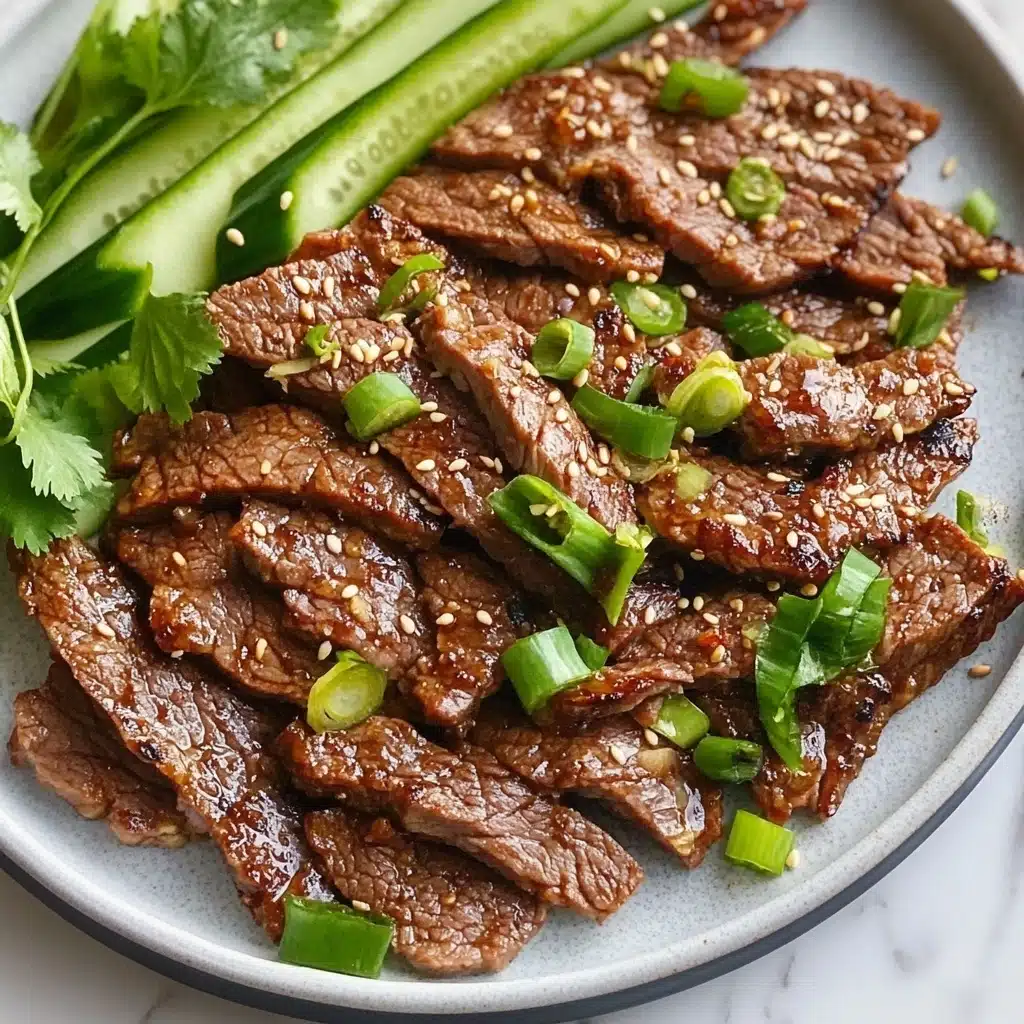
Garnishes
Korean Beef Bulgogi loves a finishing touch! Try showering each platter with a flurry of freshly sliced green onions and toasted sesame seeds—the fresh crunch and subtle nutty bite bring the whole dish to life. A few extra dots of gochujang or a sprinkle of chili threads add a welcome pop of color and gentle heat, if you’re craving more spice.
Side Dishes
This beef goes hand-in-hand with a comforting bowl of steamed white rice, but you can’t go wrong with classic Korean banchan (side dishes) like kimchi, pickled radish, or sautéed spinach. For a lighter meal, pile your bulgogi into crisp lettuce wraps and add a bit of rice and pickles for a perfect bite.
Creative Ways to Present
If you’re feeding a crowd, arrange your Korean Beef Bulgogi in the center of a platter surrounded by little bowls of toppings and sides. For parties, skewer the marinated beef before grilling for easy, grab-and-go bulgogi sticks—or tuck the sizzling beef into steamed bao or tortillas for a playful fusion twist.
Make Ahead and Storage
Storing Leftovers
Store any leftover bulgogi in a tightly sealed container in your refrigerator for up to 3 days. The flavors actually deepen, so your next-day lunch is guaranteed to taste even better than dinner!
Freezing
Korean Beef Bulgogi is freezer-friendly—just pop cooled, cooked beef (or even the marinated raw beef) into a freezer bag, press out the air, and freeze for up to 2 months. Thaw overnight in the fridge before reheating or cooking fresh.
Reheating
Reheat your bulgogi in a skillet over medium-high heat for the best texture. Add a drizzle of oil if needed and stir until piping hot—just a few minutes does the trick without drying the beef out.
FAQs
-
Can I use a different cut of beef instead of rib eye?
Absolutely! While boneless rib eye gives you the juiciest flavor, you can use sirloin, tenderloin, or even thinly sliced flank steak—just be sure to cut against the grain for tenderness.
-
What does the pear do in Korean Beef Bulgogi?
The grated pear acts as a natural tenderizer, gently breaking down the beef’s fibers and adding a hint of sweetness that balances out the other bold flavors in the marinade.
-
Is there a substitute for gochujang?
If you can’t find gochujang, mix a little miso paste or sriracha with a tiny splash of honey for that sweet-spicy flavor; it won’t be exactly the same, but your bulgogi will still taste incredible!
-
How do I prevent the beef from sticking to the pan?
Make sure your pan is hot before adding the beef, and use enough oil to coat the surface. Searing in small batches prevents overcrowding and sticking, letting each slice caramelize beautifully.
Final Thoughts
If you’ve never experienced the joy of making—and eating—real Korean Beef Bulgogi at home, now is your chance. Go ahead and give it a try; I promise it’ll win over hearts (and appetites!) with just one bite. Let those savory-sweet aromas fill your kitchen and share some seriously good food with people you love!
Print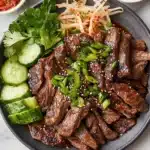
Korean Beef Bulgogi Recipe
- Prep Time: 2 hours
- Cook Time: 15 minutes
- Total Time: 3 hours
- Yield: 6 servings
- Category: Stovetop
- Method: Stovetop
- Cuisine: Korean
Description
Delight your taste buds with this flavorful Korean Beef Bulgogi recipe. Tender slices of rib eye steak marinated in a perfect blend of sweet, savory, and spicy flavors, grilled to perfection, and served garnished with green onions and sesame seeds.
Ingredients
Marinade:
- 1 1/2 pounds boneless rib eye steak, thinly sliced
- 1/2 small pear, peeled and coarsely grated
- 1/4 cup reduced-sodium soy sauce
- 2 tablespoons brown sugar
- 2 tablespoons toasted sesame oil
- 3 cloves garlic, minced
- 1 tablespoon freshly grated ginger
- 1 tablespoon gochujang, Korean red pepper paste
Other:
- 2 tablespoons vegetable oil, divided
- 2 green onions, thinly sliced
- 1 teaspoon toasted sesame seeds
Instructions
- Prepare Steak: Freeze steak for 30 minutes, then slice thinly.
- Marinate: Mix pear, soy sauce, brown sugar, sesame oil, garlic, ginger, and gochujang. Marinate steak for at least 2 hours.
- Grill: Heat vegetable oil in a cast iron grill pan. Cook steak in batches for 2-3 minutes per side.
- Serve: Garnish with green onions and sesame seeds before serving.
Notes
- If you lack a cast iron grill pan, a large cast iron skillet works as well.
Nutrition
- Serving Size: 1 serving
- Calories: 345
- Sugar: 6g
- Sodium: 800mg
- Fat: 22g
- Saturated Fat: 8g
- Unsaturated Fat: 12g
- Trans Fat: 0g
- Carbohydrates: 8g
- Fiber: 1g
- Protein: 28g
- Cholesterol: 80mg

